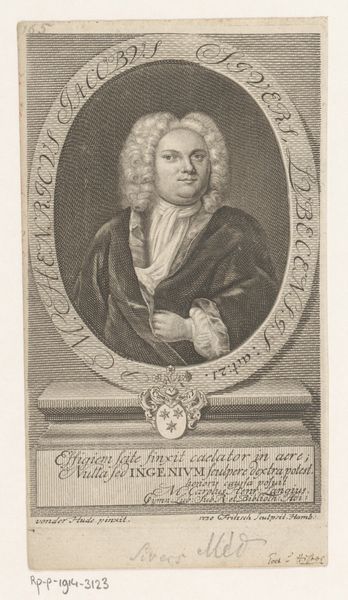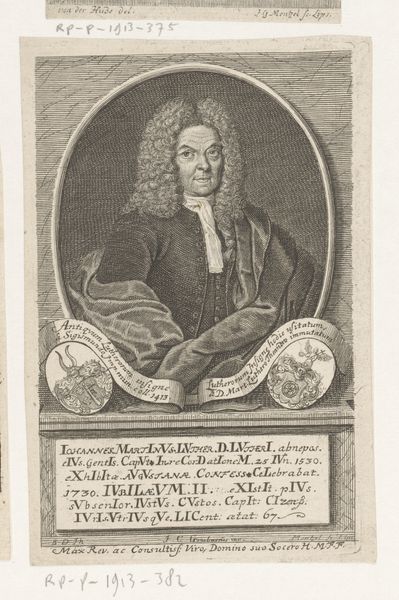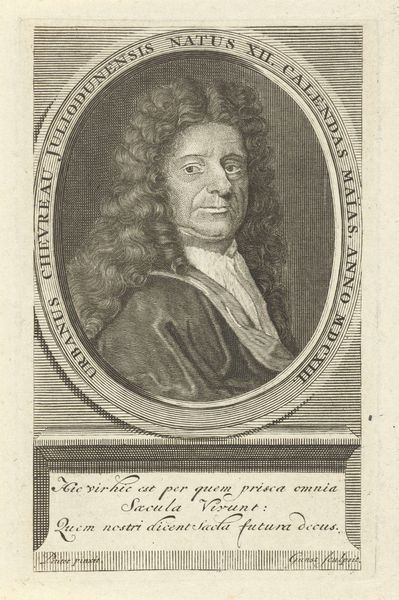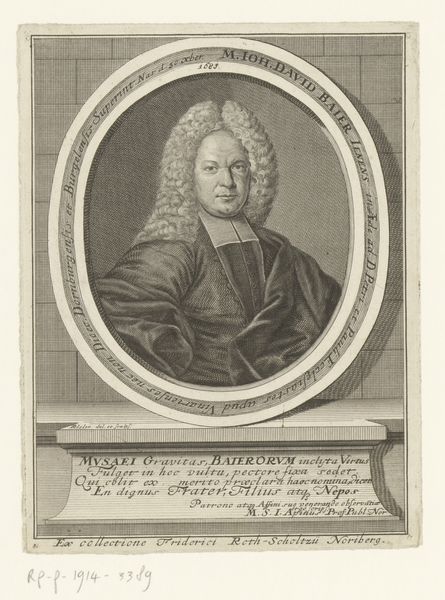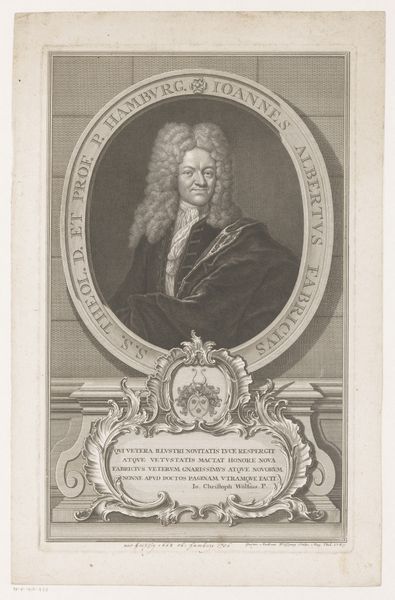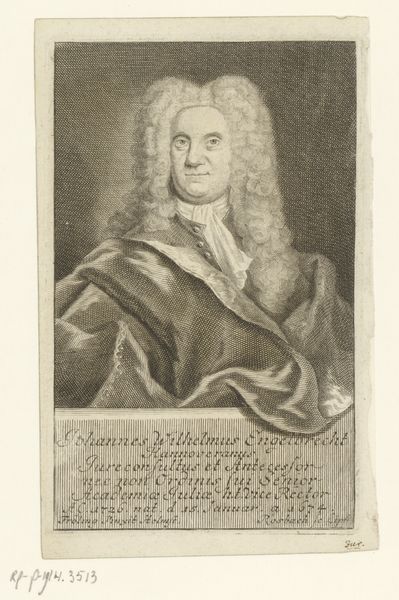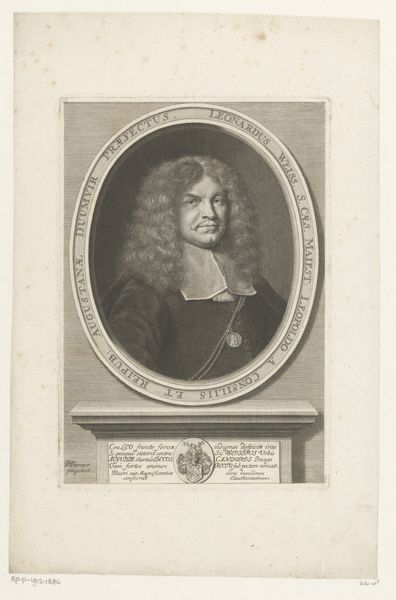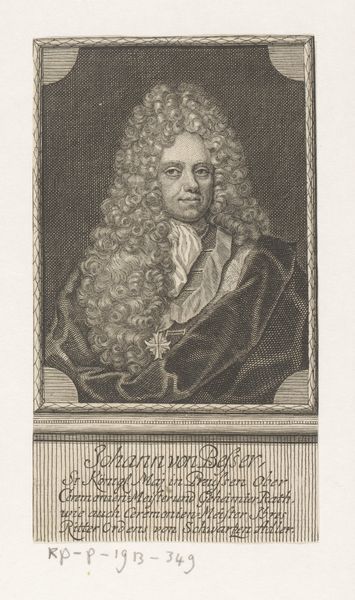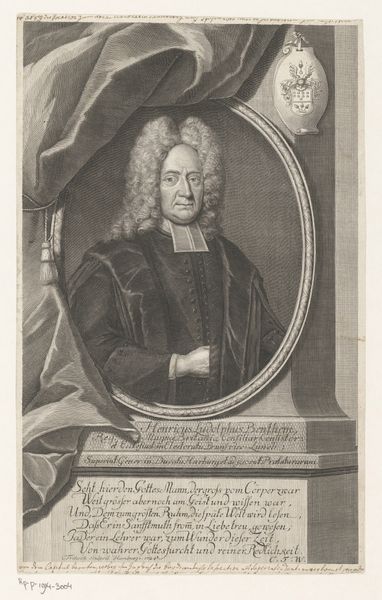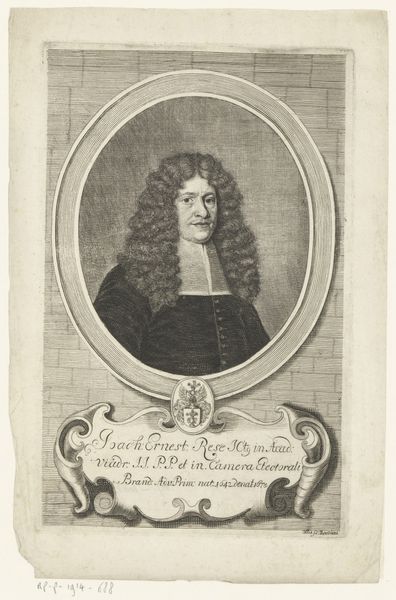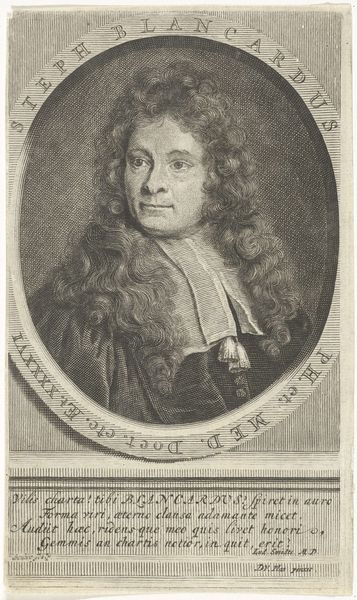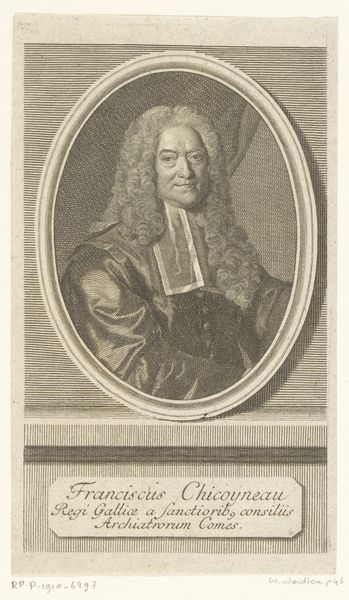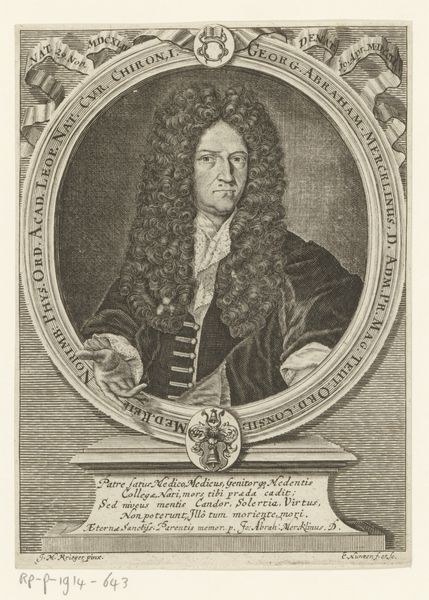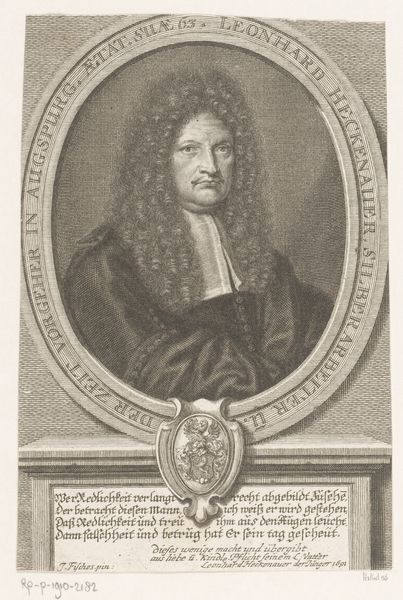
engraving
#
portrait
#
aged paper
#
toned paper
#
baroque
#
old engraving style
#
personal sketchbook
#
portrait reference
#
engraving
Dimensions: height 150 mm, width 95 mm
Copyright: Rijks Museum: Open Domain
Editor: This engraving, "Portret van Johann Albert Fabricius" by Christian Fritzsch, made sometime between 1705 and 1736, is fascinating! The level of detail achieved is really striking, especially the intricate lines that define his wig. What symbols or cultural touchstones stand out to you in this portrait? Curator: I'm immediately drawn to how the image operates within the visual language of its time. Consider the wig, not just as a fashion statement, but as a symbol of status, intellectual authority, and belonging to a learned society. The oval frame itself acts as a kind of lens, focusing our attention, but also placing the subject within a tradition of portraiture that stretches back centuries. Notice the Latin inscription below, grounding Fabricius in classical learning and linking him to a lineage of scholars. Does that add to your understanding? Editor: It does, especially knowing about the inscription and classical learning! I guess I see the wig more like a theatrical costume rather than part of a status symbol, like, more performative. Curator: Interesting! Think about the “theater” of the academy at the time. Those powdered wigs WERE a uniform of sorts. How does understanding its visual weight impact your perception of the image? Editor: Seeing it that way, it brings out the almost formulaic quality of such portraits during that era, which, in turn, puts the emphasis back on the individuality that the artist manages to capture, through the facial expression, maybe? Curator: Exactly! We're dealing with layers of symbolism here, and also a cultural memory carefully constructed through visual cues. Considering cultural symbolism helps bridge history to present perceptions of status and intellect. Editor: Thanks, this really opens up a new layer of thinking about historical portraiture.
Comments
No comments
Be the first to comment and join the conversation on the ultimate creative platform.
